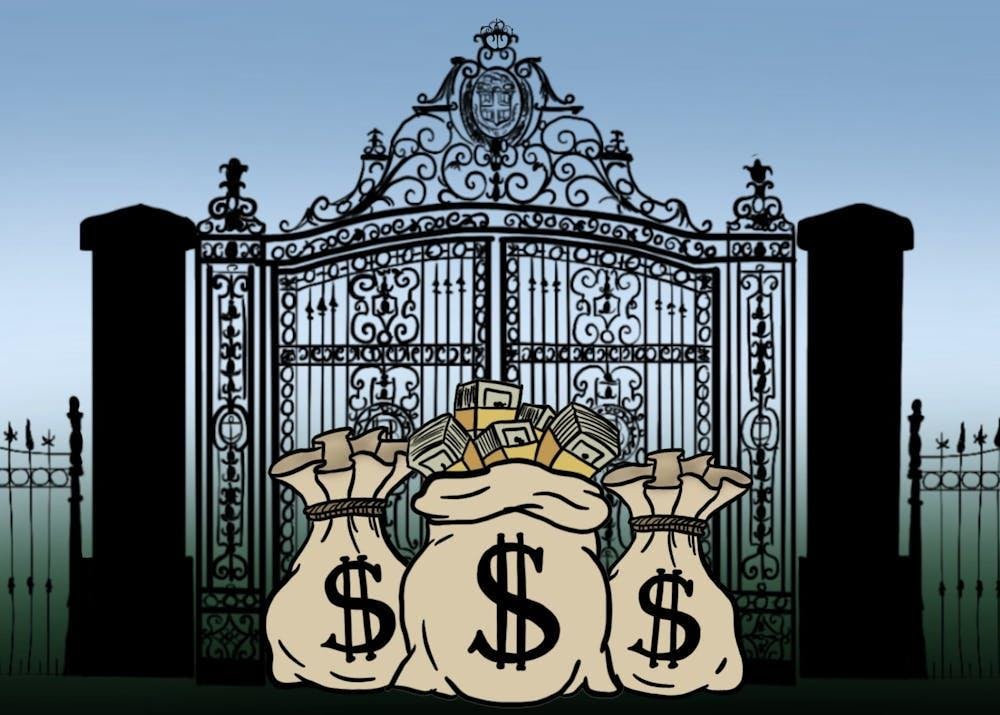As of June 30, 2024, the University’s endowment — a collection of invested funds from donors dating back to 1769 — sits at $7.2 billion.
Although most of these funds are invested in a portfolio of financial assets to support the University in perpetuity, a portion of the endowment is taken to contribute to the University’s operating budget each year. In fiscal year 2025, the University’s operating budget is set at $1.83 billion — with endowment funds making up about 18% of the budget.
“Per the approved FY25 budget, Brown’s endowment is providing $337.7 million of revenue to support priorities in the current fiscal year,” University Spokesperson Brian Clark wrote in an email to The Herald. In FY24, the endowment contributed $281 million to the budget.
Amid the Trump administration’s plans to halt $510 million of Brown’s federal funding, questions have been raised about the endowment’s potential to financially support the University.
Clark wrote that as of Friday “Brown still has received no formal notification from the federal government” about the proposed cuts.
In a declaration filed in a joint lawsuit against the Department of Energy for cutting grant funding, Vice President for Research Greg Hirth ScM’87 PhD’91 wrote “it has been suggested that Brown use its endowment to make up for these lost federal funds.”
“The endowment provides an essential source of support for the University’s financial aid, faculty salaries, and academic and co-curricular programs and consists of over 3,800 unique funds that are legal contracts given as charitable gifts by alumni, parents, students and friends of the University,” he added. “These are restricted by law and purpose for their designated use, and cannot simply be reallocated.”
What is the endowment?
The University’s endowment is made up of more than 3,800 accounts. Some are allocated for specific purposes, while others are general funds to support University operations. The funds are managed by a 23-person team in the University Investment Office.
The office sometimes brings in specialized managers and private equity managers to facilitate specific investments, according to a former investment manager at Brown who was granted anonymity to discuss sensitive internal operations.
Each year, the University Resources Committee recommends a “payout rate” — a percentage of funds that can be pulled from the endowment to support University operations. This rate is approved by the Corporation, the University’s highest governing body. Typically, that rate ranges between 4.5% and 5.5%. In FY 25, it hit 5.5%, the highest rate currently allowed.
The URC recommends a payout rate after taking into consideration annual budgeting needs, Clark wrote. In FY25, the URC proposed a temporary increase of the endowment payout rate to 5.5% in order to “support the operating budget’s critical investments in FY 2025.”
The University sets the rate “by using a payout formula intended to provide a steady stream of income to support current needs, while preserving the endowment’s future purchasing power,” Clark wrote. “If too much is spent in the short term, inflation will erode the endowment’s value in real-dollar terms and could shortchange future generations.”
What barriers prevent the University from dipping into the endowment?
The payout rate serves as a primary barrier to using the endowment to cover budget cuts. It is governed by a Rhode Island statute called the “Uniform Prudent Management of Institutional Funds Act.” Similar versions of the statute have been adopted in 49 states. According to the act, any payout rate over 7% of the endowment’s market value “creates a rebuttable presumption of imprudence.”
This means that if the University were to exceed a 7% payout rate, the state would assume they were improperly managing the endowment — unless they provided evidence to the contrary. Penalties for violating the UPMIFA can include fines, civil or criminal charges and a loss of tax-exempt status.
Brown Investment Office seeks to ensure that the endowment grows faster than the payout rate and anticipated inflation. The endowment is intended to support the University in perpetuity, and pulling out more than the typical payout rate could have lasting impacts on Brown’s spending power for generations to come, the former investment manager said.
Some funds are also allocated for specific purposes, typically by donors, posing another barrier to their use. The University can legally modify the designation of funds with consent from the donors. But this could be difficult since many of these funding streams were set up decades ago, according to the former investment manager.
What other avenues can the University take to manage funding cuts?
Other solutions the University could take to cover budget deficits and funding cuts would fall outside the scope of endowment management, the former investment manager said. All the Investment Office is “trying to do is make money,” he added.
Decisions like raising tuition, taking out loans, selling assets or leasing buildings to cover cuts would be made by the Finance Division, the investment manager said.
Since the Trump administration threatened Brown’s funding, the University has taken out a $300 million loan. Facing a $46 million budget deficit and an uncertain federal landscape, the University also implemented cost-cutting measures like reducing PhD admissions targets, instituting a staff-wide hiring freeze and limiting operating expenses.
With these factors in mind, “We will continue to develop fiscal scenarios and make budget decisions in ways that can best support the Brown community,” Clark wrote. “Beyond the actions we’ve already conveyed, we cannot speculate on what specific measures we will take or may be required.”

Ciara Meyer is a section editor from Saratoga Springs, New York. She plans on concentrating in Statistics and English Nonfiction. In her free time, she loves scrapbooking and building lego flowers.
Elena Jiang is a University News Editor from Shanghai, China concentrating in English Nonfiction and International & Public Affairs.





